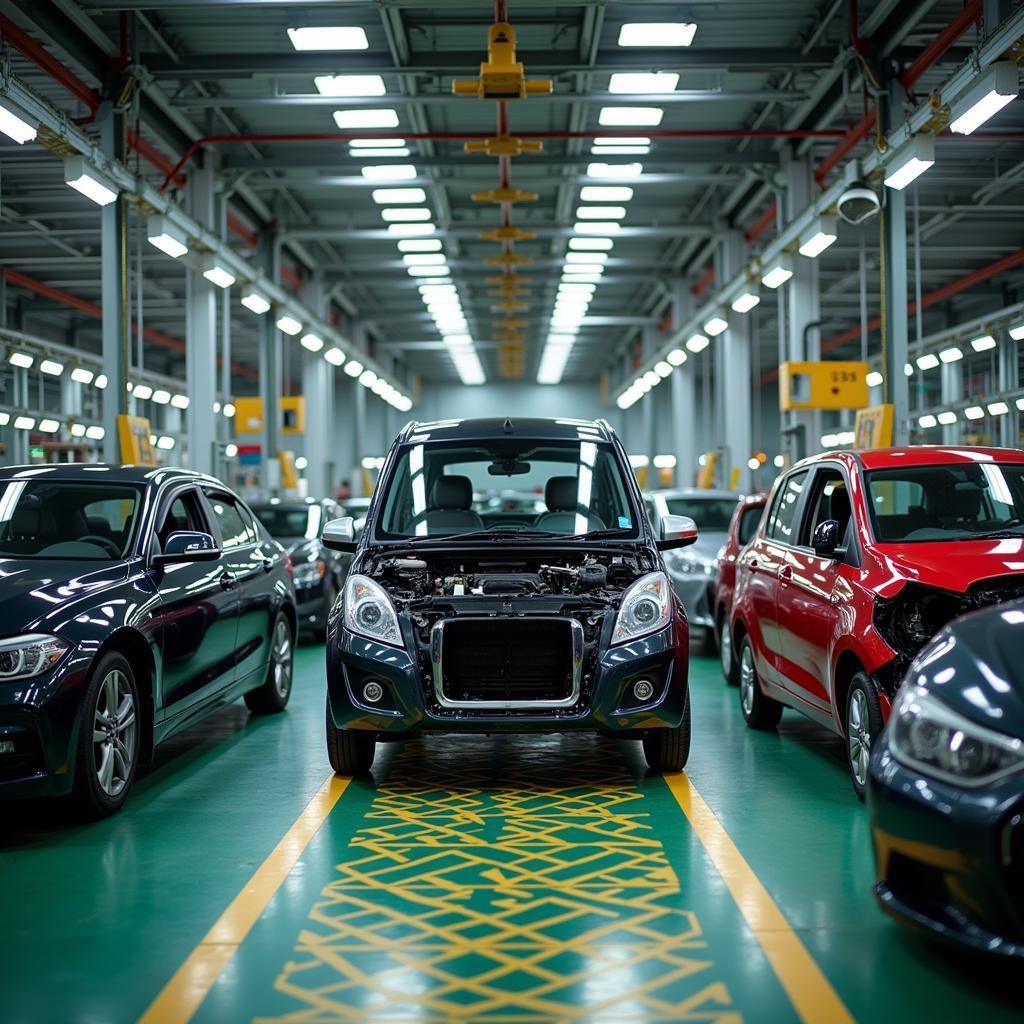The ASEAN composite car, a topic frequently discussed in automotive circles, represents a significant step towards regional integration within the ASEAN Economic Community (AEC). This article delves into the intricacies of ASEAN composite cars, exploring their definition, significance, and potential impact on the Southeast Asian automotive industry.
Decoding the ASEAN Composite Car
Essentially, an ASEAN composite car refers to a vehicle that is assembled using a combination of parts sourced from different ASEAN member states. This initiative stems from the region’s commitment to fostering economic cooperation and promoting the free flow of goods and services within its borders.
 ASEAN Composite Car Manufacturing Process
ASEAN Composite Car Manufacturing Process
The concept of an ASEAN composite car is intrinsically linked to the ASEAN Free Trade Area (AFTA) agreement, which aims to reduce tariffs and other trade barriers among member states. By encouraging the use of locally sourced components, the initiative seeks to:
- Boost intra-ASEAN trade: Facilitating the exchange of automotive parts and components within the region.
- Enhance competitiveness: Enabling ASEAN car manufacturers to benefit from economies of scale and improved access to resources.
- Attract foreign investment: Positioning ASEAN as an attractive hub for automotive manufacturing and investment.
Key Features of the ASEAN Composite Car Scheme
The ASEAN composite car scheme is characterized by a set of criteria that determine the eligibility of vehicles for preferential tariff treatment under AFTA. While the specific requirements may vary slightly among member states, they generally revolve around:
- Local Content Requirement: A minimum percentage of the vehicle’s components, by value, must originate from ASEAN countries.
- Regional Value Content (RVC): This calculation takes into account not only the value of parts but also the cost of manufacturing processes performed within ASEAN.
- Rules of Origin: Specific guidelines are in place to determine the origin of automotive components and prevent transshipment from non-ASEAN countries.
Benefits and Challenges of ASEAN Composite Cars
The ASEAN composite car initiative presents a myriad of potential benefits for the region’s automotive sector and economy as a whole. However, it also comes with its own set of challenges that need to be addressed:
Benefits:
- Economic Growth: Increased trade and investment in the automotive industry can contribute significantly to economic growth in ASEAN.
- Job Creation: The expansion of the automotive sector can generate numerous employment opportunities, particularly in manufacturing, assembly, and related industries.
- Technology Transfer: Collaboration among ASEAN manufacturers can facilitate the transfer of technology and expertise within the region.
Challenges:
- Non-Tariff Barriers: Technical barriers to trade, such as varying safety and emission standards, can hinder the seamless flow of vehicles across borders.
- Supply Chain Integration: Establishing efficient and well-coordinated supply chains across multiple countries can be complex.
- Investment in Research and Development: To remain competitive globally, ASEAN needs to invest heavily in research and development of new automotive technologies.
 ASEAN Composite Car Engine Components
ASEAN Composite Car Engine Components
The Future of ASEAN Composite Cars
The ASEAN composite car concept is still evolving, and its success will depend on how effectively member states address the challenges and capitalize on the opportunities. Key factors that will shape the future include:
- Harmonization of Standards: Aligning technical regulations and standards across ASEAN will be crucial to streamline trade and reduce costs.
- Infrastructure Development: Investing in transport and logistics infrastructure will enhance regional connectivity and support the automotive supply chain.
- Skills Development: Equipping the workforce with the necessary skills and expertise to support the evolving automotive industry is essential.
Conclusion
The ASEAN composite car initiative represents a bold step towards regional integration and economic cooperation. While challenges remain, the potential benefits for the automotive industry and the ASEAN economy as a whole are significant. By working together to overcome these hurdles, ASEAN can position itself as a major player in the global automotive landscape.
For further information on specific types of ASEAN composite vehicles, you can refer to our articles on ASE Composite Vehicle Type 4 and ASE Composite Vehicle 3. These resources provide detailed insights into the different classifications and their implications.
